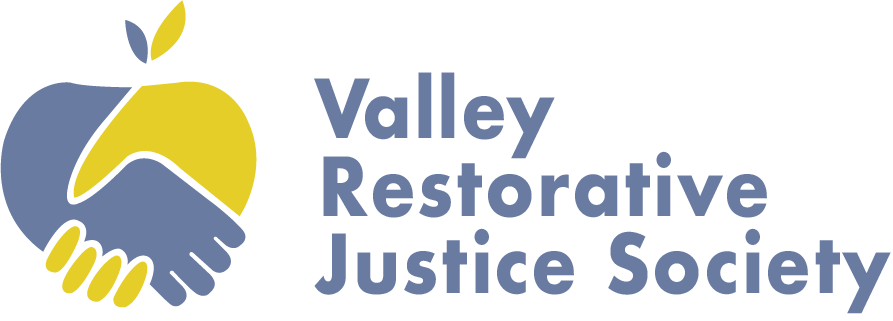FAQ
1. What is restorative justice?
Restorative justice is a way of thinking about crime and conflict. It is not a particular practice or set of activities but, rather, a philosophy or set of principles. Restorative processes hold those who have done harm accountable in a more meaningful way. The United Nations Working Group on Restorative Justice defines restorative justice as:
“A process whereby parties with a stake in a particular offence resolve collectively to deal with the aftermath of an offence and its implications for the future.”
2. Why is it called restorative justice? Who is being restored?
Restorative justice is concerned with the construction of a better society for both the present and the future. It aims to resolve crime by repairing the harm caused by the offence and recognizes that it is not always possible to replace what a victim lost in the commission of the offence. Restorative justice also aims to restore the offender to a law-abiding life and restore the damage done by the offence in the community.
3. How widespread is the interest in restorative justice? What other jurisdictions have adopted restorative approaches?
- The initial conceptualization of restorative justice began in the late 1970s, largely in North America. The oldest practice of restorative justice, victim-offender mediation, had its roots in the Kitchener-Waterloo area during this time.
- By 1990, a NATO-supported conference was held to examine growing interest in restorative justice.
- In 1996, New Zealand adopted legislation mandating the use of restorative practices in young offender cases.
- Many jurisdictions, including Canada, United States, Australia, New Zealand, Japan and European countries have adopted restorative justice programs.
4. What research has been conducted regarding the effectiveness of restorative justice programs?
Research regarding the effectiveness of restorative justice includes several important studies conducted on specific restorative justice processes, such as victim-offender mediation and family group conferencing. Research shows the following findings:
- Those harmed by a criminal incident who meet with the person who caused harm are far more likely to be satisfied with the justice system’s response to their case than those who go through the normal justice process.
- After meeting with the person who caused harm, those harmed are significantly less fearful of being re-victimized.
- After meeting with the person they have harmed, those referred to restorative justice are far more likely to complete their restitution agreement to the victim.
- Considerably fewer and less serious crimes are committed by those who have caused harm after meeting with the people who they have harmed.
- Evaluation is an important focus of the Nova Scotia Restorative Justice Program and will measure a number of important outcomes.
5. Is there public support for restorative justice.
A growing body of evidence show that the general public is far less vindictive and more supportive of the principles of restorative justice than many might think.
Studies indicate greater public concern for strategies that focus on restitution and prevention rather than those that focus on retribution.
A February 1998 opinion poll conducted by the Nova Scotia Department of Justice showed that Nova Scotians have a preference for a system that allows non-violent offenders to take responsibility for their actions and repair the harm done, rather than one that simply places the offender in jail.

6. Can restorative justice be used in serious cases?
The Nova Scotia Restorative Justice Program is not intended to replace the conventional criminal justice system. It does, however, have the potential to meet needs not currently met by the existing system.
The need for reconciliation and healing exists for all offences, regardless of their severity. In fact, the experience of a restorative process often seems more meaningful to those people who have been harmed, the people who have done the harm and community members when it involves a more serious case and the harm is more profound.
It is important to realize that restorative justice is not necessarily about avoiding incarceration or being given a “lighter” sentence. Restorative processes referred by Courts often look for more context and for input from community and those who have been harmed.
7. Is restorative justice “soft on crime”?
Some would argue it is more difficult for someone who has caused harm to meet with the person they have harmed than to proceed through the criminal justice system.
In the conventional criminal justice system, those who have caused harm are not required to accept responsibility for their actions, are not held accountable for their actions and are not required to explain their actions. Many who proceed through the criminal justice system do so with a lawyer who speaks on their behalf.
Restorative processes offer a more active and clear opportunity for those who have caused harm to be held directly accountable for their actions. Rather than being “soft” on those who have caused harm, restorative processes require the person who caused harm to act more responsibly and to determine what those harmed need in order to move forward in a better way. The human consequences of the actions of someone who has caused harm are dealt with more directly than they are in the conventional criminal justice system. Restorative processes ask what happened but, most importantly, what matters about what happened and what is needed to move forward.
8. What if the victim does not want to participate in a restorative justice process?
Participation in the program is entirely voluntary for those harmed by a criminal incident.
Often, those who are harmed are more satisfied with the entire criminal justice process if offered the opportunity to take a more active role in the process. This can be achieved through restorative justice. Every effort will be made to provide the person(s) harmed with the information, preparation and support they need to engage in a restorative process. Each situation is unique and the process will be designed for the needs of the individuals involved in each file.
It is understood that not all who have been harmed will wish to participate in the restorative process. In such cases, the restorative process can still be held and the perspective of the person(s) harmed can still be brought forward. Restorative processes aim to keep the concerns and impact on the person harmed at the forefront. Community representatives, support people and other professionals will be invited to participate in lieu of the direct victims. Victims may also have a family member or friend participate for them. The caseworker will be helpful in guiding you through the process and helping you determine what level of engagement you wish to take.
9. Is restorative justice appropriate for “victimless” crimes?
Certain offences, such as drug offences, do have a significant impact on our communities. In this case, community representatives or local organizations could attend to talk about the effect such crimes have on the entire community.
10. How is “community” defined for the purpose of restorative justice?
The term “community” as used in restorative justice, does not always specifically refer to any particular physical or geographic entity. For the purpose of a restorative justice process, the community includes the people and organizations affected by crime. The people invited to participate in a restorative justice process are those who can help illuminate the issues involved and also those who might have the ability to provide a piece of the way forward – for example by providing a program or other helpful service.
11. How does restorative justice deal with family and/or societal issues that arise during the process?
Restorative justice focuses on identifying causes that may have led to the commission of an offence. Identifying key support people during the restorative process will assist those who have harmed to address personal issues that may have contributed to the offence. Crime affects everyone differently, so those harmed will also be connected with support, resources and helpful services, if needed. Community members can give valuable insight into the conditions in their communities that may have contributed to the offence and may be given an opportunity to take action to remedy those conditions.
Although it takes time to create a safe space for difficult discussions, restorative processes provide an opportunity for the justice system to work more collaboratively with other service providers and organizations, such as schools, health organizations, child protective agencies and social service agencies in an effort to address the underlying causes of the crime.
12. Where can I get more information about the Nova Scotia Restorative Justice Program?
Staff at Valley Restorative Justice are always happy to explain the restorative justice process to you. Feel free to call us at 902-679-0650 or email the Executive Director at lisa@valleyrestorativejustice.org.
For more information on the Nova Scotia Restorative Justice Program, click here Nova Scotia Restorative Justice Program | novascotia.ca.
